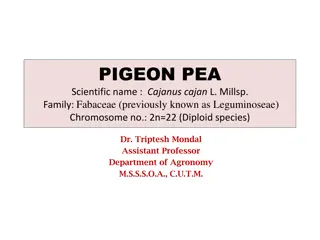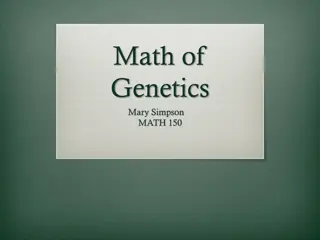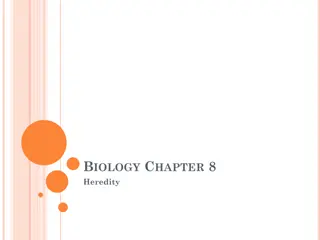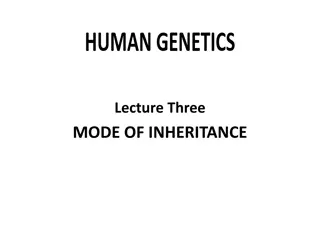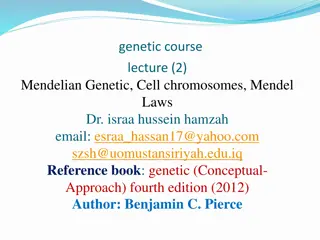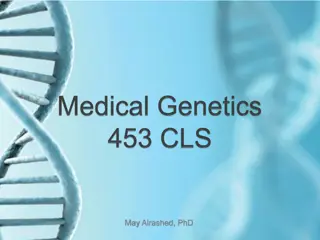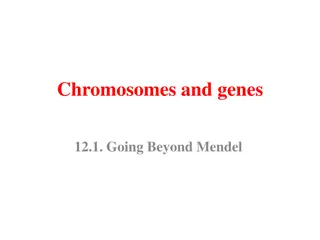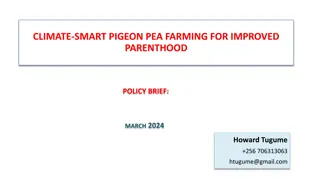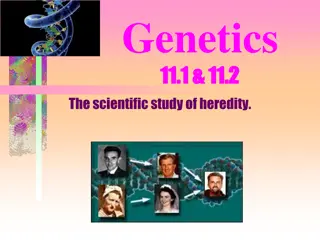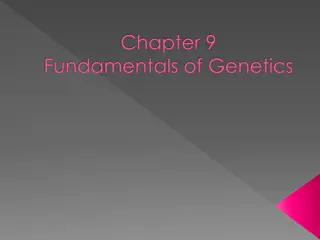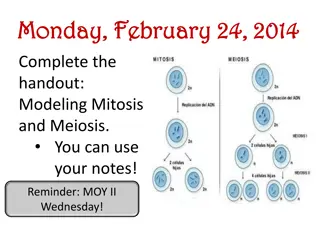Gregor Mendel and His Work with Pea Plants
Gregor Mendel, an Austrian monk born in 1822, is known as the father of genetics for his groundbreaking work with pea plants. By carefully examining traits such as stem height, flower color, and seed shape, Mendel discovered the principles of dominant and recessive alleles. His experiments with pea plants revealed the patterns of inheritance that laid the foundation for modern genetics. Despite initial lack of recognition, Mendel's work continues to be influential in the field of biology.
Download Presentation

Please find below an Image/Link to download the presentation.
The content on the website is provided AS IS for your information and personal use only. It may not be sold, licensed, or shared on other websites without obtaining consent from the author.If you encounter any issues during the download, it is possible that the publisher has removed the file from their server.
You are allowed to download the files provided on this website for personal or commercial use, subject to the condition that they are used lawfully. All files are the property of their respective owners.
The content on the website is provided AS IS for your information and personal use only. It may not be sold, licensed, or shared on other websites without obtaining consent from the author.
E N D
Presentation Transcript
Learning Target I can discuss the work Gregor Mendel did with pea plants.
Who was Gregor Mendel? Gregor Mendel was an Austrian monk born in 1822 He is most known for his work with pea plants while living in a monastery Gregor Mendel was a scientist and often referred to as the father of genetics. His work was not recognized in his lifetime
Pea Plants Pea plants usually self pollinate To prevent this he would remove pollen producing structures from one flower then brush pollen from another flower onto the original flower. He examined opposite traits.
Traits Examined Stem Height: Tall vs. short Flower color: White vs. violet Seed color: yellow vs. green Seed shape: Round vs. wrinkle
Traits Examined Pod Shape: Smooth vs. pinched Pod Color: Green vs. yellow Stem Position: Side vs. end Seed coat color Gray vs. white
Results of crosses In the F1 generation (first set of offspring produced) only one trait (tallness) is seen, the other seems to disappear. F1 generation are permitted to self pollinate
Results of Crosses In the F2 generation (second set of offspring) the tallness trait is seen in =75% of the offspring while the shortness trait reappeared in =25% offspring.
Alleles Alleles: Are different forms of a gene Dominant Allele: Always shows up in organism when allele is present Recessive Allele: An allele that is masked if dominant is present, need two recessive alleles to be expressed
Dominant Vs. Recessive Gregor Mendel found that for each trait he examined there were two forms of the trait. One trait was seen more often and was decided to be dominant. If at least one dominant allele was inherited the dominant trait was displayed The recessive trait would reappear in the second generation for about 25% of offspring Recessive traits are only displayed if an offspring inherits two recessive alleles for that trait (one from each parent)
Co-dominance Neither Allele is dominant or recessive Both alleles are expressed physically in the organism. Example: Blood type in humans type AB is condiment and results when an offspring get an allele for type A from one parent and type B from the other parent.
Incomplete dominance Neither allele is dominant When an organism is heterozygous for a trait it shows a third phenotype. This tend to be a blend of the original two organisms


